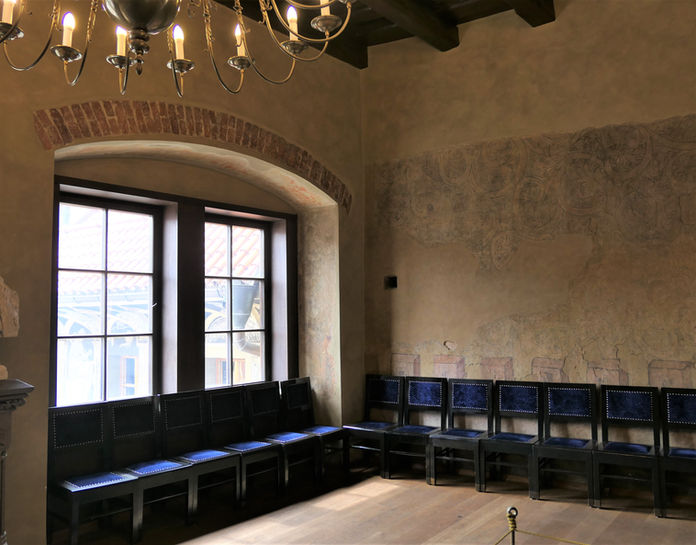
PRAGUE, The (too famous) square in the old town
It is well known that all roads lead to Prague; we called elsewhere "Rome of the North" at the beginning of the 20th century.
And so in its center, here is the Old Town Square.
At the end of the square, quite irregular and quirky probably because of the different stages of its history, the surprise is considerable; even when the light is dark.
Impossible to remain indifferent to the majestic picturesque of the place, to its diversity with its proud square tower belfry, where Renaissance and Middle Ages, with its luminous and very spectacular astronomical clock.

face nord-est
La tour de presque 70 mètres est construite en 1364.

et face sud-est
L’horloge astronomique est ajoutée en 1490.
Son mécanisme est d’origine, qui actionne à chaque heure le passage des figurines refaites en 1948 (12 apôtres et 4 autres rassemblées en un curieux assortiment, la Mort, l’Avare, le Vaniteux et le Turc).
then with other points of view
From the top of the tower, which is accessed by a staircase (our choice) or by an internal elevator, the view of the Square and the city is magnificent.
The whole is framed by the alignment in soft curves of the high facades, where coexist without excluding each other but on the contrary with remarkable harmonies the baroque (and the neo-baroque), the Renaissance style with in particular the splendid sgraffito of the Maison de coin called "A la minute", a bit of medieval. And even Art Nouveau.
At ground level, rows of arcaded galleries, the vivid colors of certain fronts, the open space of a sort of central square near the Jan Hus memorial, all add to the attraction.



The House " Minute " did part of the Town Hall, but only in 1896 ;
so called because the pharmacy it housed was accessible from all points of the Old Town in less than a minute.
ND du Tyn, Gothic church started in 1364 under Charles IV. It was that of the Hussites until 1621.
Tycho Brahé was buried there in 1601.
The gothic church of ND du Tyn, is started in 1364 under Charles IV. It was that of the Hussites until 1621.
Tycho Brahé was buried there in 1601.
And the attraction is there.
But he's getting blunt when, on time, the crowd is patient en masse in front of the clock waiting for the bells to ring with an almost crystalline sound, while disappointingly, the statues of the apostles parade in front of furnished openings up there one third of the height of the tower.
All these smartphones, those cameras stretched out in prayer to the sky above ecstatic faces are the pinnacle of modern (self) idolatry; we implores the double-sided god who is not Janus, but the goat on the front and Narcissus on the back (or vice versa).
The splendor of the clock itself is much more captivating, convergence of luxury, magnificence of a remarkable artistic object, and scientific precision. And its mechanism for scrolling through the figurines is not without interest, seen from the inside.
We also like imagine what another flavor this place would have if it weren't for the cafes, restaurants and their overflowing terraced tents. But where would be then Manna?...



Until the last bombings of 1945, the facade of the Town Hall reflects the long history of Prague.
Its very heterogeneous appearance, according to successive styles, destruction and more or less successful reconstructions is an edifying one. transcription .
As in other large European metropolises founded on the banks of a waterway, the old ground floors have become cellars because the city had to be backfilled to protect against flooding, here those of the Vltava.
Thus, above the labyrinth of Romanesque and Gothic vaults, the Town Hall, originally a single house acquired in 1388, gradually joined the neighboring houses, and took off under the reigns of Charles IV and Vanceslas IV of Bohemia. It was further embellished under that of the Jagiellons at the end of the 15th and the beginning of the 16th, but did not finally join the House "by the minute" until 1896!



The interior visit of the Old Town Hall, the underground vaults of the first buildings in the city, large and sumptuous rooms say so much of the past splendor of this place.






